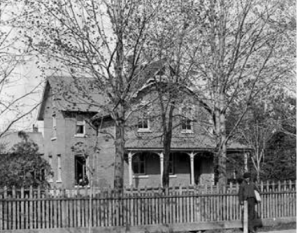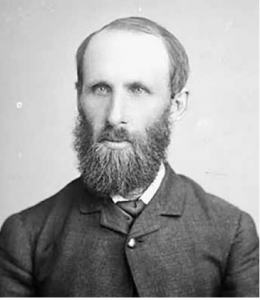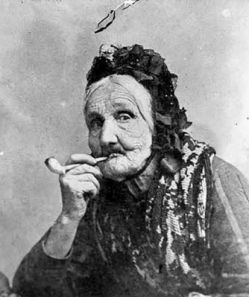Lori Gandy
Old Ottawa East has its share of notable forefathers and mothers who devoted much energy to enhancing and improving everything around them, freely giving of their time and expertise. James Ballantyne (Ballantyne) is one such individual. Often referred to as a “renaissance man,” he had wide-ranging interests and an infinite capacity to get involved and get things done. Old Ottawa East is all the richer because of Ballantyne’s contributions.
Born in Newcastleton, Scotland on May 9, 1835, Ballantyne immigrated to Canada with his brother Thomas when they were 16 and 14 respectively. They settled near Smith Falls with their parents and eight brothers and three sisters who had immigrated around 1840. (Really, someone should write an article about his mother, Marion Ballantyne – 13 children!) In his early years, Ballantyne was involved in building and contracting work.
An entrepreneur at heart
Ballantyne left his family in 1863 and set out for Ottawa where he established a cooperage – a barrel-making business – in the Lower Town area. When that business was destroyed by fire in 1870, he relocated the cooperage to Ottawa East, and was joined by his brother Thomas as partner in the business. In 1890, the brothers converted their barrel-making business into the J. and T. Ballantyne Heating Fuels Company on Echo Drive, which became a family business when their sons later joined them. Ballantyne lived in the Ottawa East Village until his death in 1925. His contributions to our community go much beyond supplying wheel barrels and fuel. With his strong civic focus and innovative, enquiring spirit, Ballantyne “fuelled” many an endeavour, improvement and constructive enterprise.

James Ballantyne’s now-demolished home at 54 Main Street was as
central to the life of the community as was Ballantyne himself
An early mover and shaker in civic affairs
Upon settling in Ottawa East, at the time the Village of Archville, Ballantyne took a great interest in municipal and civic affairs and was one of the leading citizens of the town. In 1888, when the Village of Archville officially incorporated as Ottawa East Village, he became the first village Reeve, and held the position for seven consecutive years. He was actively involved in numerous betterment plans and projects, including establishing, along with other prominent community members, a system of waterworks for the Ottawa East village.
A driving force behind the Town Hall
It was during his time as Reeve that our beloved Town Hall building was designed and built. Ballantyne wanted a building that would announce the presence of the thriving Ottawa East Village. He commissioned his nephew Henry, a newly minted architect, to draft the plans and the building was erected in 1895. The Town Hall served many purposes in its early days, including a dance hall, kindergarten, Carnegie Library, Baptist Mission, a theatre group and a jail, to name just a few, a splendid showcase of the life and times of Ottawa East over the years.
Beyond the Village….
Ballantyne’s influence and interests went beyond the Village of Ottawa East. He was also elected to the Carleton County Council for nine years and he served as secretary-treasurer of the Ottawa East Public Schools. By 1907, he was one of the main supporters of the village’s annexation into Ottawa. He is also renowned for establishing the first schools in the Village.
His lasting legacy…An archaeological find in our midst
As a founding member of the Ottawa Literary and Scientific Society (later the Ottawa Field Naturalists Club), Ballantyne indulged his interest in archaeology. And a good thing too, because in 1892 when he unearthed a prehistoric adze in the Graham Brickyard near Brantwood Park, Ballantyne realized its value and was able to remove and preserve it properly. An adze is a ground and polished stone artefact characterized by a generally rectangular shape with a bevelled cutting edge on one end. It is used as a woodworking tool. Ballantyne donated the adze to the Geological Survey of Canada. The adze, dated at 3,000 to 5,000 years old, is the oldest object ever found in Ottawa East, and it now resides in the Museum of Civilization. The adze is a tangible reminder of the Indigenous peoples who thrived in this community thousands of years before the arrival of Europeans like James Ballantyne.
A legacy in photographs
Ballantyne’s interest in photography resulted in a vast collection of photos that provide a valuable portrait of the early years of our community. He was an avid and prolific photographer who often joined his daughter Mae with their camera equipment to capture scenes of ordinary daily life, in the Ottawa East Village and beyond. He left a remarkable legacy to this community in the form of numerous images of the people who lived, worked and played in the Village during his time. The “James Ballantyne Photographic Collection” resides in the National Archives of Canada and the entire collection is online at http://www.ottawahh.com/ottawahh. pl?x=gallery&g=ballantyne-1&p=27 . His interest in photography also led him to establish the Ottawa Camera Club. Throughout 2022, The Mainstreeter will publish selected photos from the Ballantyne photo collection to provide all of our readers with a fascinating glimpse of this community as it existed during the period of 1880 – 1920, when much of Ballantyne’s photographic history of Ottawa East was compiled.
A legacy in our landscape
Ballantyne’s giving spirit lives today in the form of a park. His property at 54 Main Street was demolished after his death and that of his daughter, Mae, who had been living there, and the land was donated to the community to become Ballantyne Park on Hawthorne Avenue. The donation of land included a $10,000 trust, which was discovered in the 1980’s and used to install lights and a plaque in the park.








